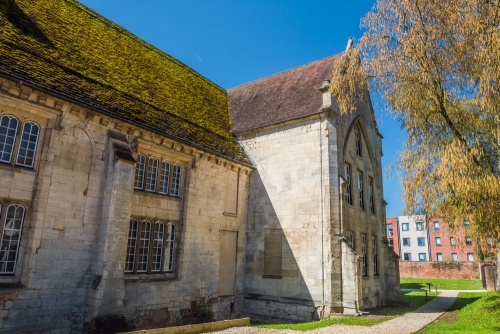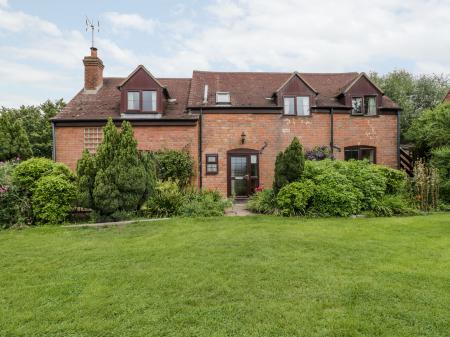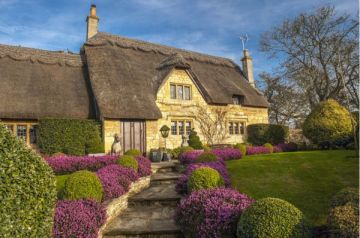
History
The friary was established around 1239 under the patronage of Henry III. The site chosen for the new friary had earlier formed part of a Norman fortification.
The king granted timber to erect the monastic buildings from the royal forests of the Forest of Dean, as well as other royal lands in Dorset snd Shropshire. Some of the original 13th-century timber roofing can still be seen in the south range.
Blackfriars may have served as a hospital for the families of benefactors, many of whom would have been buried in the friary in gratitude for their contributions of land or money. In 1991 a cemetery on the site was discovered which included the skeletons of women and children.

The monastic complex took the form of a quadrangle, with four ranges around a central cloister. This cloister area measures roughly 80ft per side. The friary church occupied the north side of the cloister, the refectory was to the west, the scriptorium to the south, and the dormitory, chapter house, and warming house were on the east. The cloister walk was originally paved with decorative ceramic tiles, though these have now been covered up.
The friary church was extended with the addition of north and south transepts in the 14th century.
At its height, the friary was home to 30-40 friars, but by the 16th century Blackfriars had fallen on hard times, and the remaining six friars were reported to be living in a state of 'miserable poverty'.

Dissolution
The friary was dissolved by Henry VIII in 1539, at which point it was purchased by Sir Thomas Bell, three-time mayor of Gloucester, who also bought other monastic properties around the city after they were suppressed by the Crown. Bell was a clothing and cap merchant of great wealth; indeed, at the height of his power he employed roughly a tenth of the entire population of Gloucester in the making of knitted caps.
Bell paid 240 pounds for the friary and converted the friary church into a house which he called Bell Place. Other parts of the monastic complex were later converted to become a knitting and spinning factory.

Bell shortened the church nave and inserted new floors, mullioned windows, and fireplaces, some of which probably came from the Prior's Lodging.
Thomas Bell died in 1566 and Blackfriars passed to the Dennis family, who remained owners into the late 17th century. The monastic buildings later went through a variety of owners. At various points, Blackfriars served as a home to a stonemason, private school, church, and mineral water bottling works. In the 19th century, the west range became a terrace of private houses.
In recent years the friary has served as a venue for hire, housing events as diverse as weddings, corporate gatherings - and my 12-year-old daughter's fashion show!

What to See
Among the best features of Blackfriars are the friary church and the dormitory, which boasts a scissor-braced roof. Sections of cloister wall still stand and you can make out joist holes where timbers supported the roof.
The south range, which was finished around 1239, contains a scriptorium on the first floor. This may be the oldest surviving library building in England. The scriptorium was where the monks studied or worked on books and manuscripts. It was often placed along the cloister walk, where the light through the cloister arches provided good illumination for working on manuscripts. The scriptorium is considered the oldest purpose-built library in England.

Below the scriptorium was the lavatorium, where the friars washed their hands. The arches that supported the lavatorium are still visible.
On the east side of the complex are the remains of the Tudor kitchens, which lead into the former choir of the friary church.Getting There
Blackfriars is located on Ladybellegate Street, between Commercial Road and Longsmith Street. It is roughly five minutes on foot from the cathedral and about the same from the Waterways Museum. Blackfriars car park is immediately north of the friary.
Visiting
Though it is nominally an English Heritage site, Blackfriars is managed on a day to day basis by the Gloucester City Council. It is regularly open to the public (three days a week at this writing). When we visited there was no charge for entry, though there was an electronic kiosk where you could opt to make a donation (we did). It took us roughly thirty minutes to thoroughly explore the grounds, the cloisters, the medieval remains, and the Tudor mansion.









 We've 'tagged' this attraction information to help you find related historic attractions and learn more about major time periods mentioned.
We've 'tagged' this attraction information to help you find related historic attractions and learn more about major time periods mentioned.


